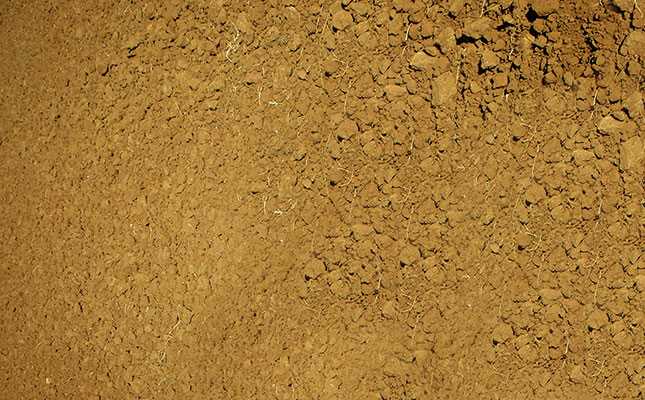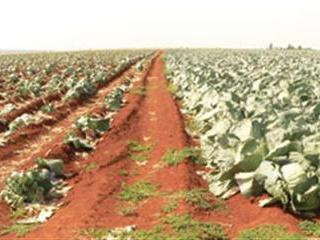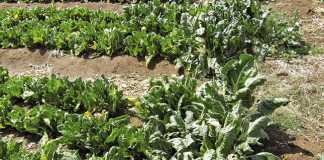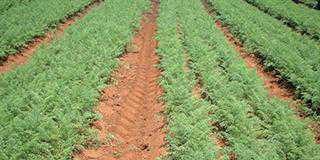
This is not the only potential problem, though. Mineral accumulation on the leaves can kill young carrot seedlings, especially if salt is part of the mineral content. I have also seen this with Capsicum plants (chillies and peppers). Young transplants are especially vulnerable.
In my experience, this problem is solved when farmers convert to night irrigation. One client who used micro-irrigation on his peppers found that the plants were burnt and stunted. I noticed a white accumulation on the tender new growth and suggested that he change to drip irrigation. He did, and the plants grew beautifully.
The sodium level was not high enough to be a problem in the soil, but enough to cause problems when accumulating on the leaves. Another way of ensuring better germination and plant survival in very hot conditions is in the selection of lands. Where possible, soil that becomes hotter in the sun should be used for a transplanted crop and cooler soil for carrots and beetroot.
Why rough, cloddy soil is best
Land preparation can also have an influence. As I’ve said before, an overworked soil might make for a fine, neat seedbed, but looks can be deceiving. This soil has a higher temperature than a crumbly surface with small clods. An overworked seedbed becomes even more of a problem after a heavy rain or irrigation as it tends to crust easily and provides a better micro-climate for the development of soil pathogens that cause damping off.
In the past, farmers would sow their carrots at up to three times the usual rate in order to allow for hot conditions that affected germination. If the weather turned out to be favourable, they would simply thin out the crop by hand. This option is no longer viable, however, given the cost of labour and seed.
It is better to have the seedbed as rough as possible. This may require more frequent light irrigations both for the cooling effect and to ensure that the seed, which is not well covered, will still germinate.
Small clods or a rough surface also increase aeration in the upper soil layer. This enhances germination and is favourable for beneficial organisms and unfavourable for damping-off organisms. Moreover, a larger surface area increases the cooling effect from water evaporation.
Mulch layer for better carrots
When carrots are exposed to very hot conditions, germination is often poor, leading to higher market prices. Placing a thin layer of mulch on the beds can make all the difference to the stand. This was standard procedure years ago, and it worked well.
The layer should be thin enough so that it does not need to be removed. A hammer mill can be used to thin out sawdust or grass/crop residue. The extra cost may be justified given the higher price on the market.
Heat-tolerant vegetable varieties
Choosing varieties that handle the heat better is a good idea. I have seen considerable differences in cabbage varieties this season where some yields have been double those of others.
This is a year when you should take particular note of these differences. It seems that even warmer conditions can be expected in the future, so it will pay to identify suitable varieties now. The heat-tolerant variety would, of course, also have to perform well in a cooler year.
Finally, with the hot, dry, windy conditions we have experienced, you should do your best to irrigate early in the morning, in the late afternoon, or best of all, at night if possible.













